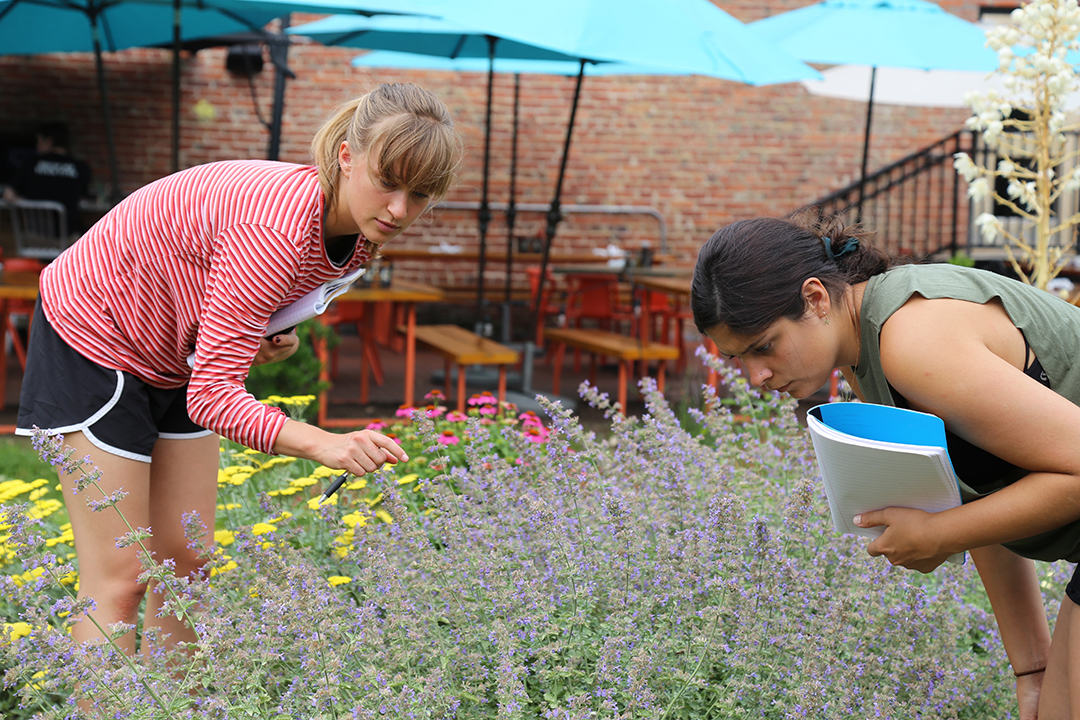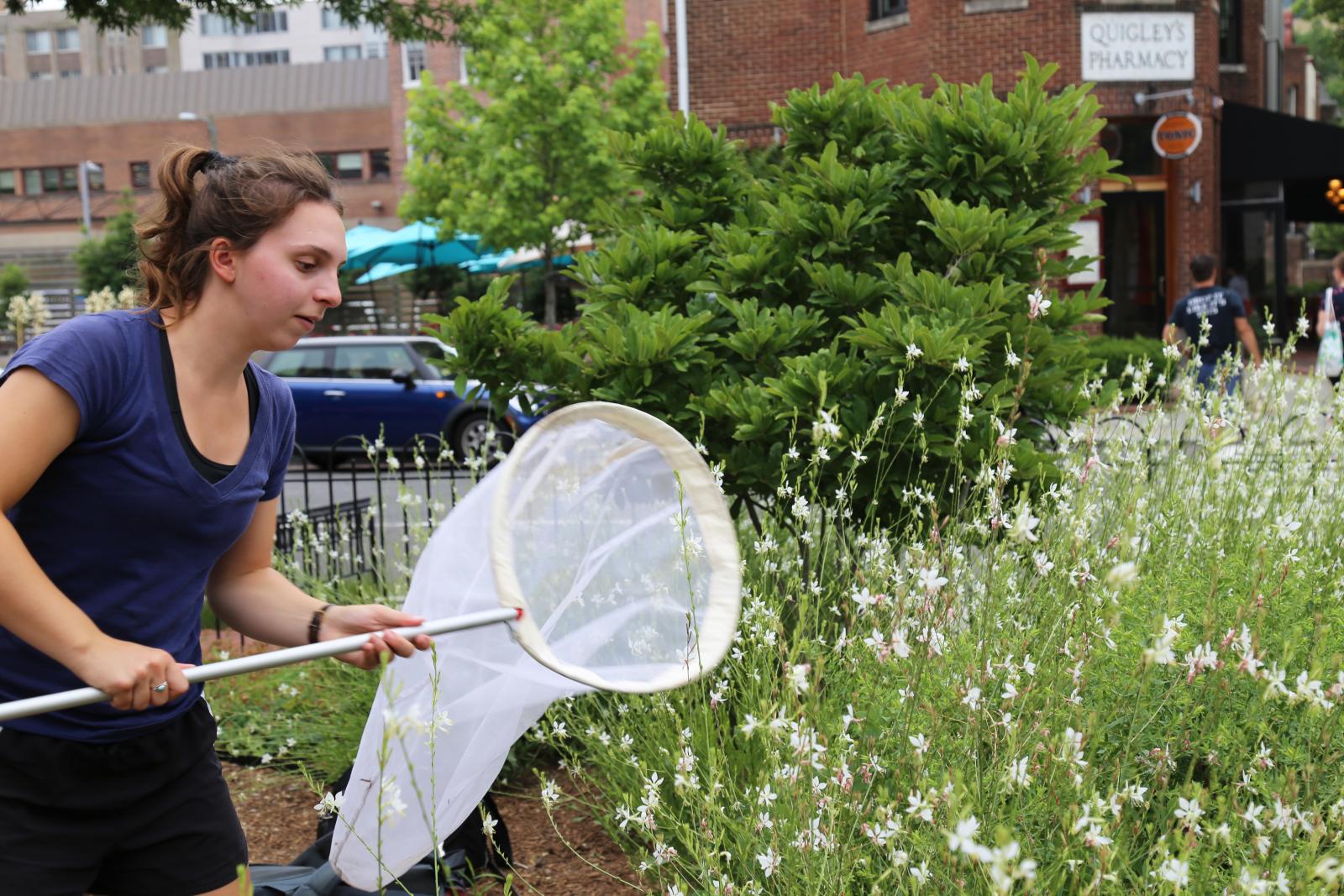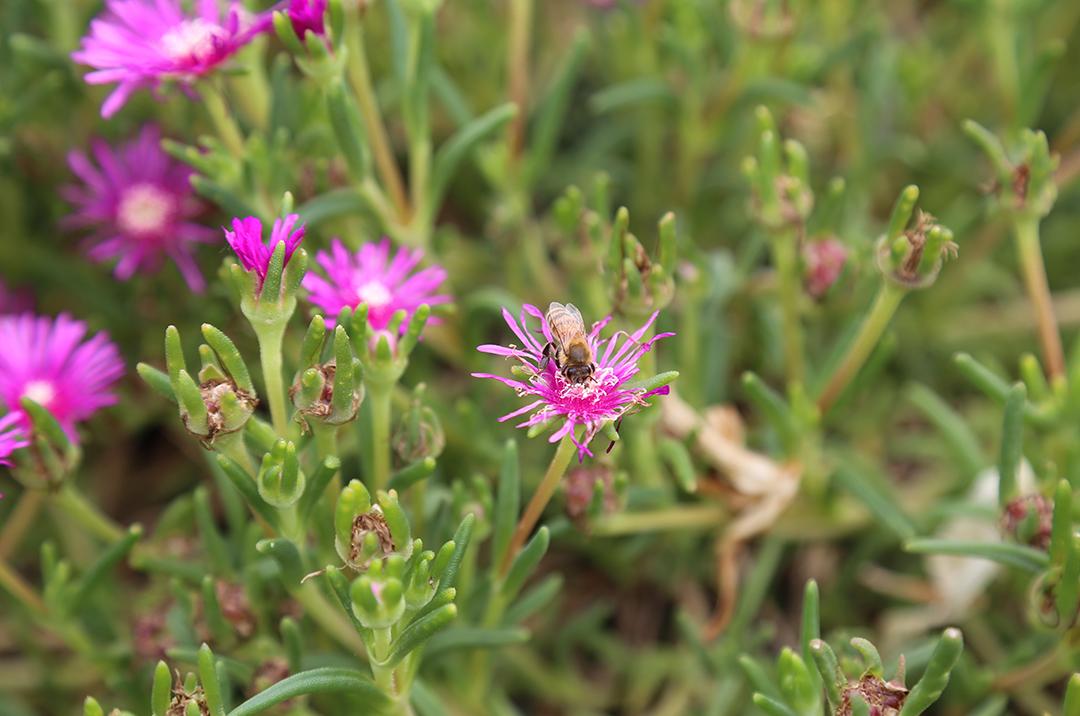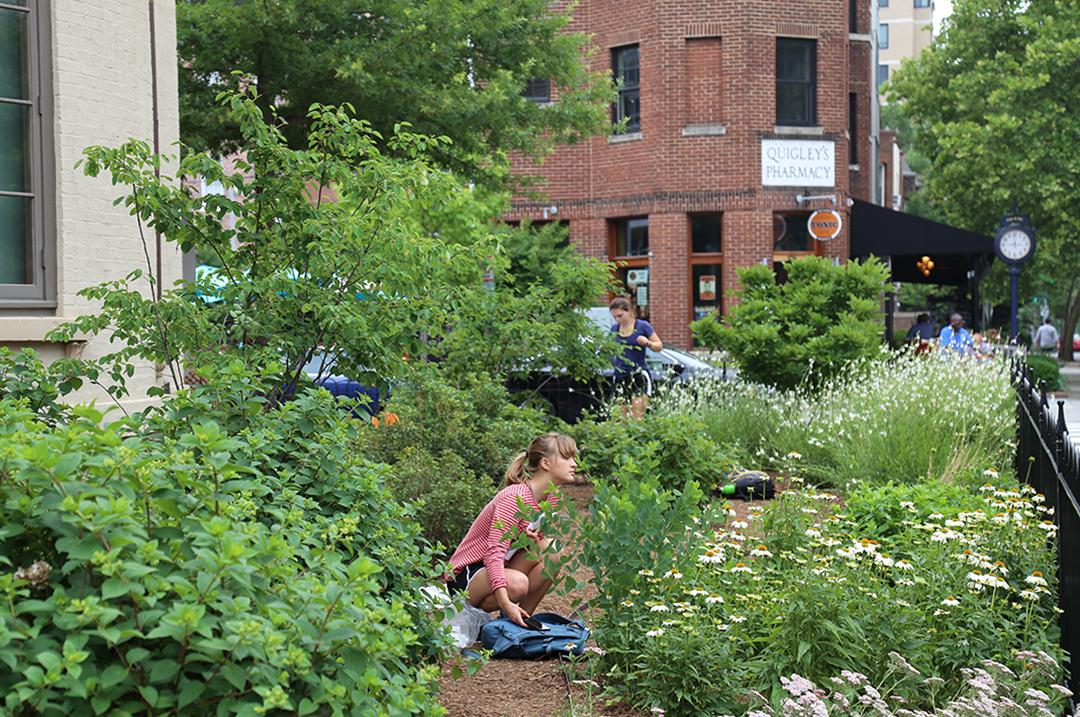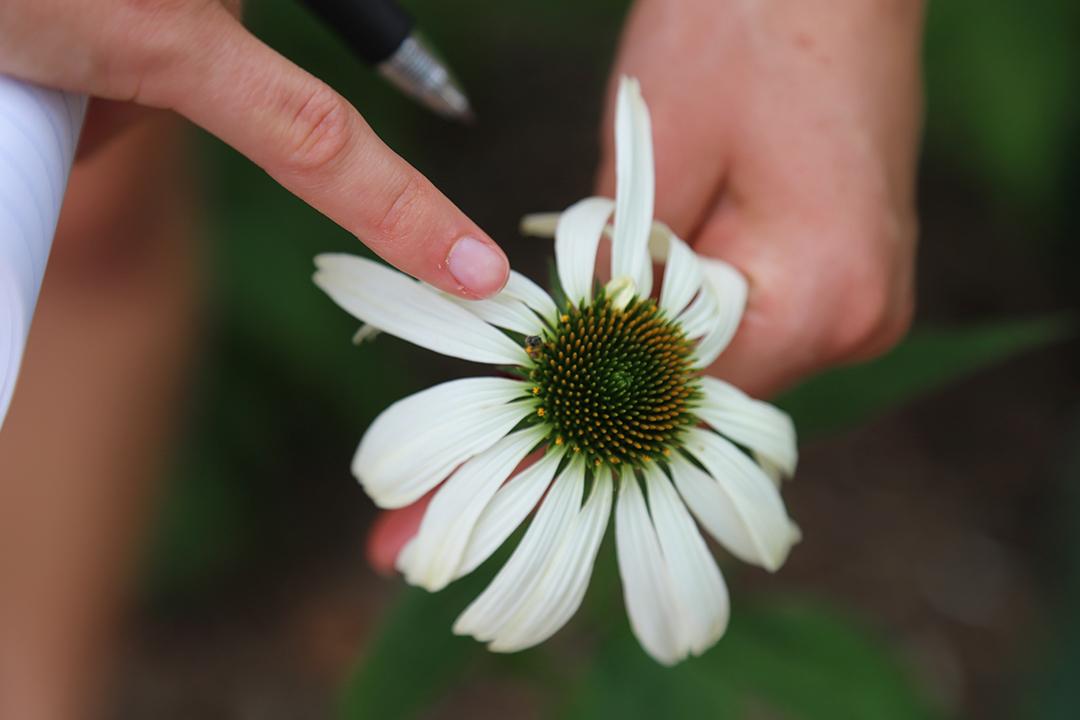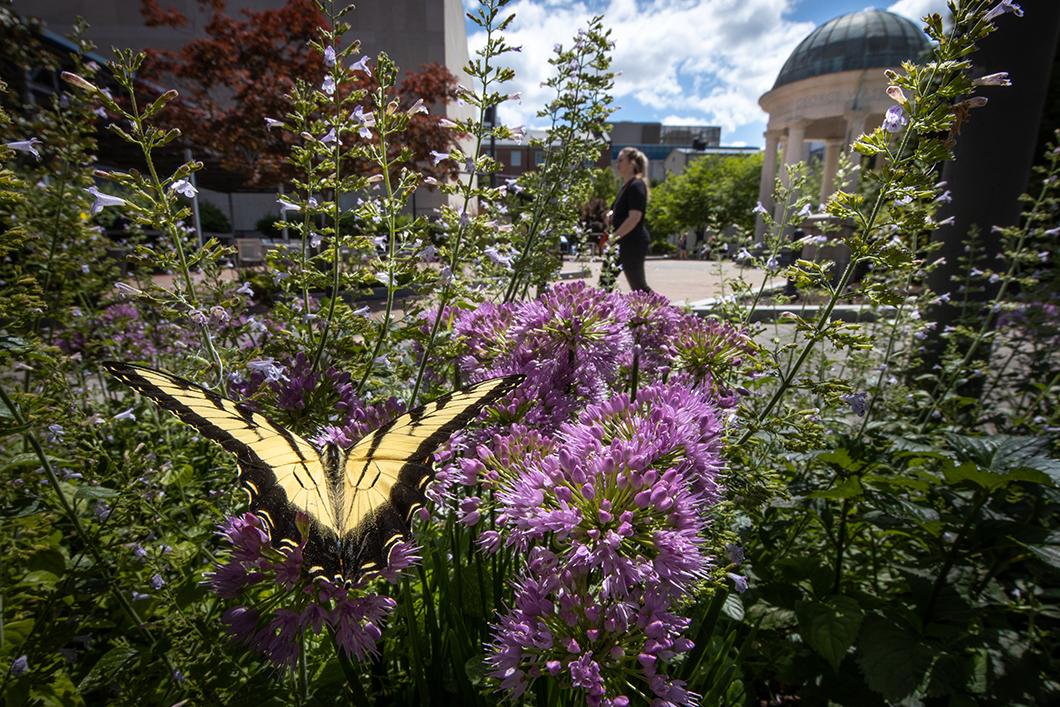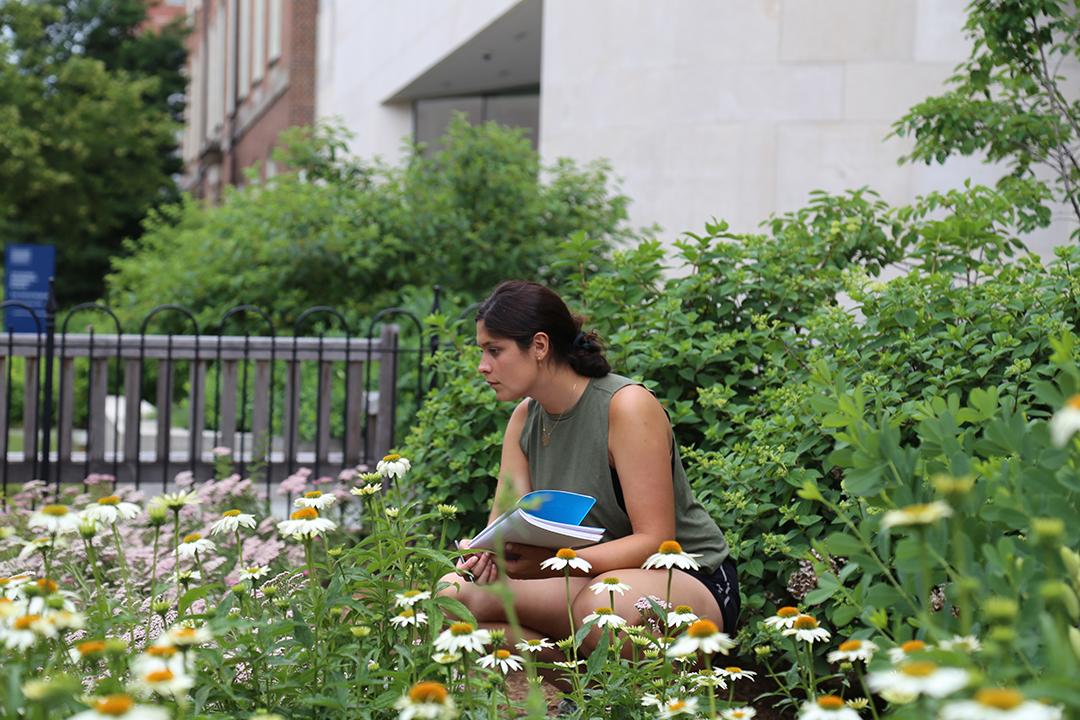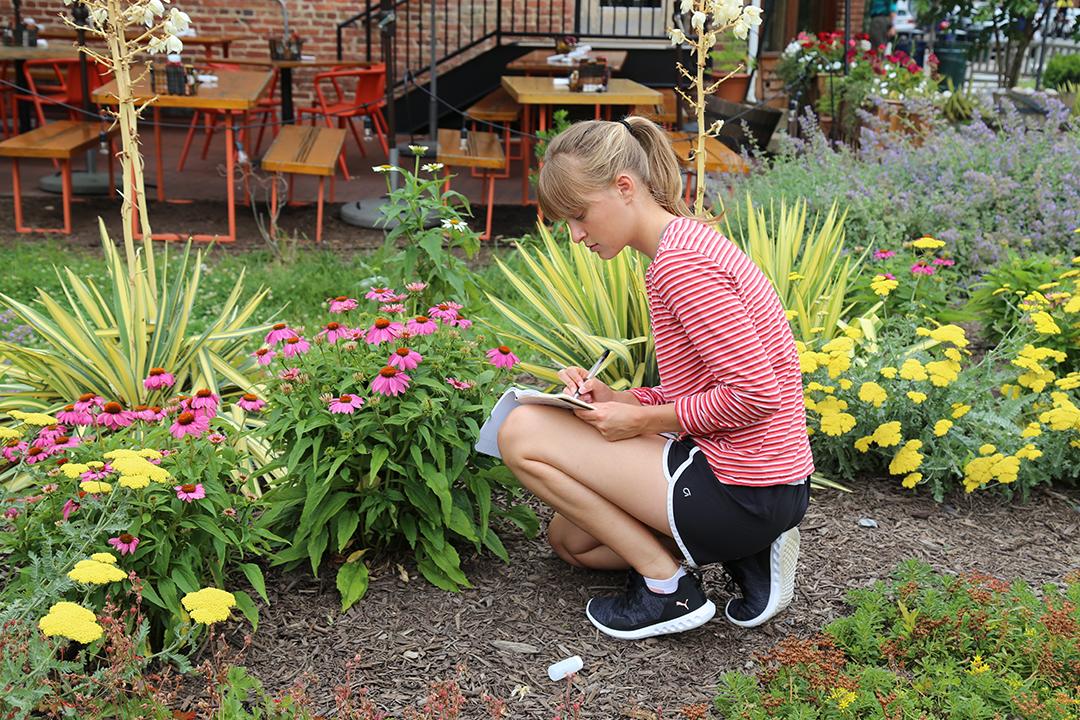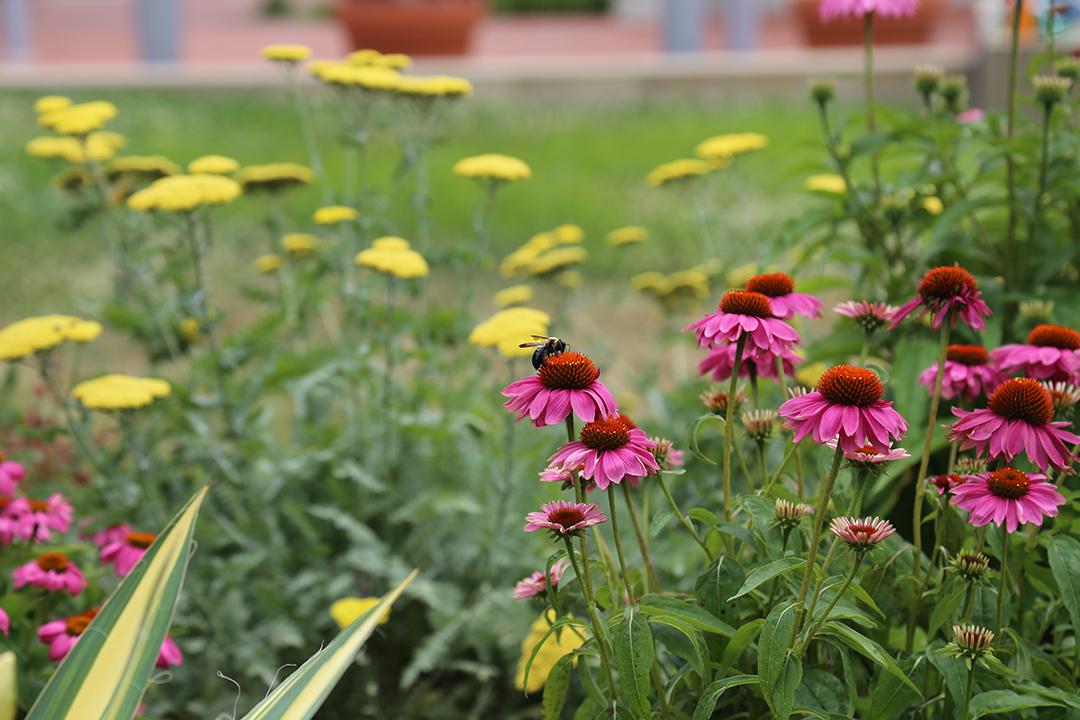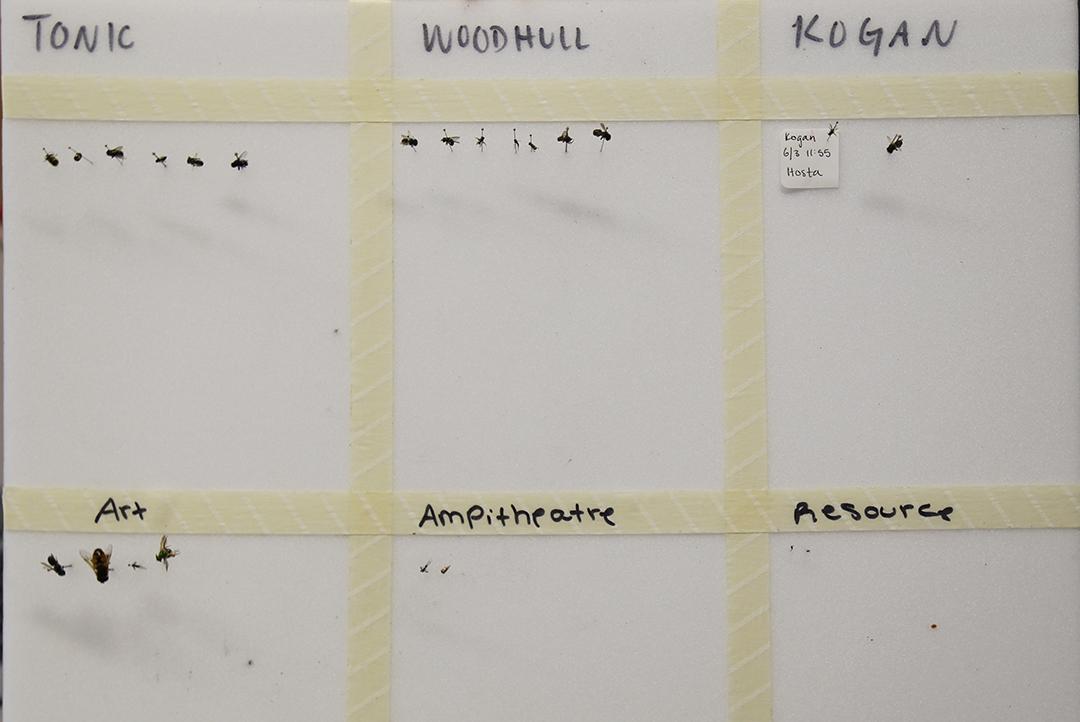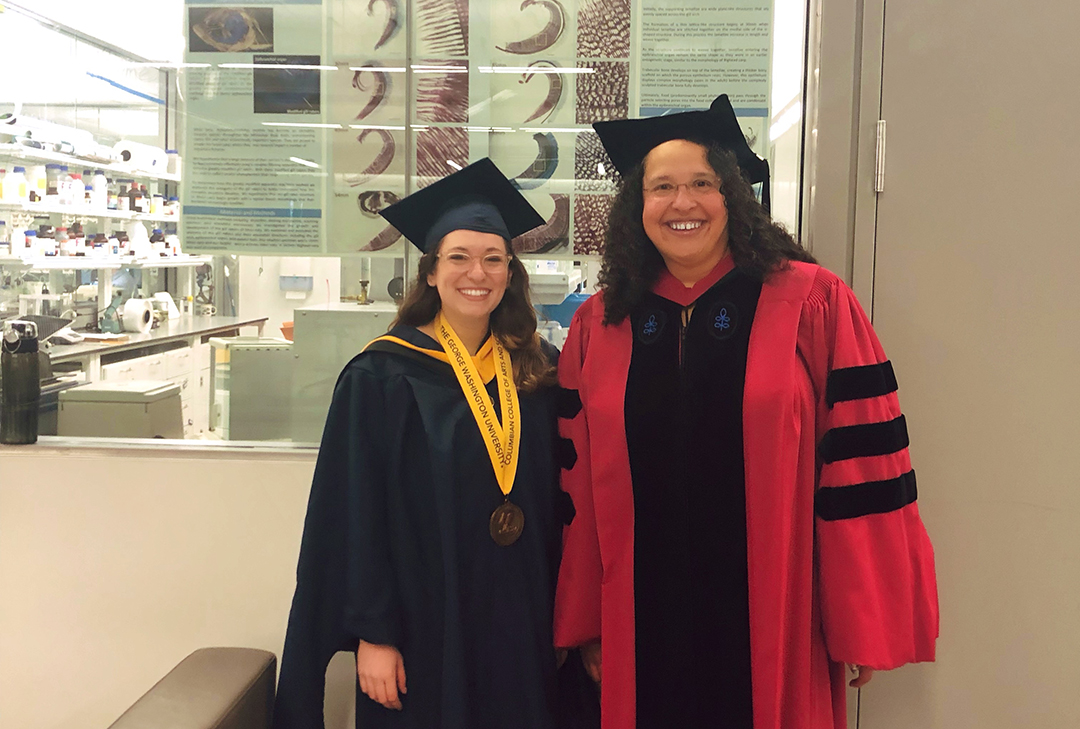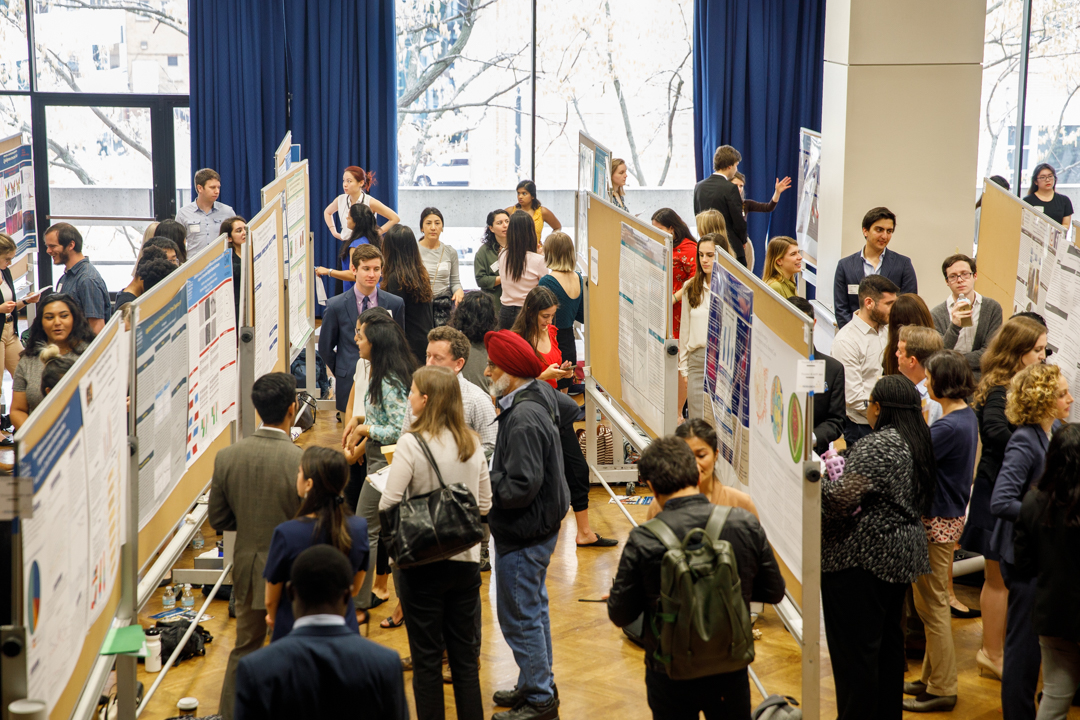By Kristen Mitchell
A trio of Columbian College of Arts and Sciences students are spending their summer huddled among Foggy Bottom’s flower beds, carefully documenting the kinds of insects they see buzzing around campus and on which flowers they land.
Adele Queener, B.A. ‘19, Camille Leoni and Fiona Lupi, junior biology majors, hope this research will help them understand how to best support the local population of insects like bees, butterflies, flies, mosquitoes and wasps that pollinate plants.
“I think there’s a greater diversity of pollinators than people realize,” Ms. Queener said. “A lot of people know about honey bees and a lot of people know about honey bee extinction and how that is really threatening and scary, but there are so many other kinds of pollinators, and so many other things that are really important. These different factors come into creating an ecosystem that can support things other than honey bees.”
The researchers are surveying three plots around campus—Kogan Plaza, the garden beside Tonic at Quigley’s and the garden near the George Washington University Museum and The Textile Museum at 21st & G streets. Several times a week they will spend 20 minutes at each plot and observe a specific type of flower. When they see an insect land on that flower, they write down that observation. If they spot an insect they haven’t seen visit the plot before, they attempt to catch it and plan to confirm its family-level identification with an expert.
The students also have been visiting American University’s campus in Northwest D.C. to collect similar data. They plan to compare the pollinator populations on both campuses to determine if factors like plant types, proximity to foot and car traffic, or size of the plot impacts pollinator diversity.
For the experimental part of their work, the research team plans to look at the ability of native plants to attract pollinators native to Washington, D.C. GW has a sizable population of Italian and Russian honey bees who live in the apiary on the roof of Bell Hall, but it’s also important that the ecosystem support local pollinators. Later this summer, they plan to plant three native plant types in a nonnative plot on campus to determine which plants are more successful in attracting pollinating insects.
Conducting a nature study comes with a lot of variables the researchers cannot control, Ms. Leoni said. While they make a point to always conduct surveys at the same time of day between 11 a.m. and 1 p.m. to maintain consistency, they can’t control factors like the air temperature, precipitation or humidity. They wonder about the role those factors play in supporting local populations. They also can’t control the planting schedule on campus.
“We ask all these questions, and sometimes throughout the summer we find answers,” Ms. Leoni said.
The students plan to continue their survey through the end of July, and then turn their focus to verifying identification of the pollinator samples they have collected and analyze data.
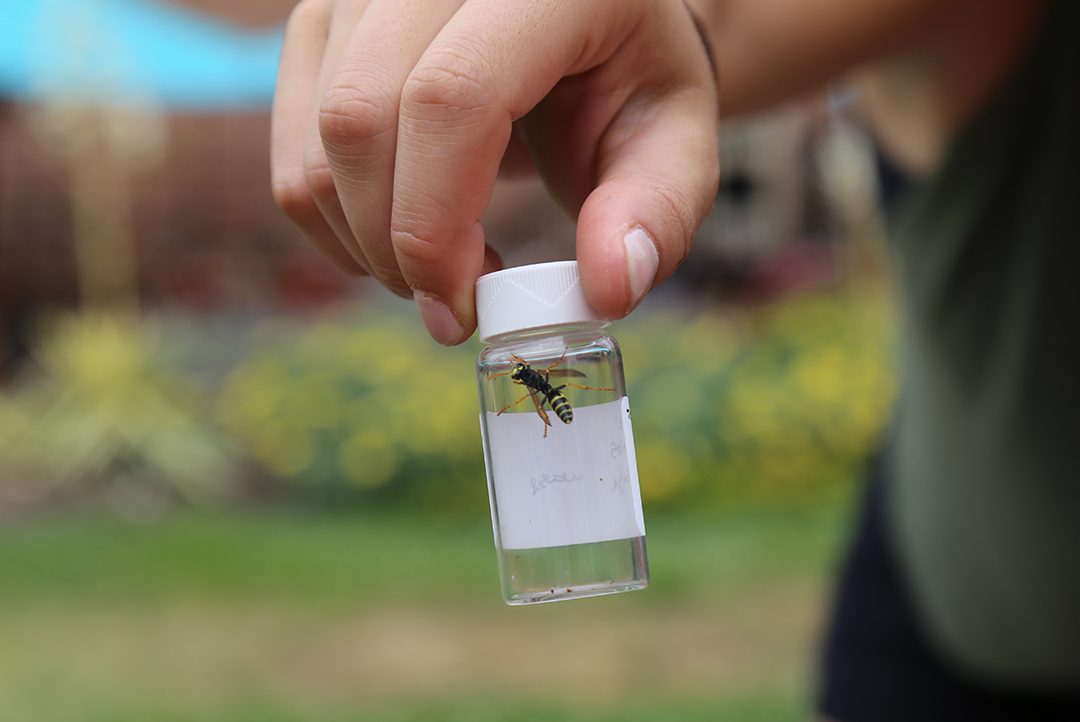
The CCAS research team aims to identify pollinators, such as this wasp, that frequent flower beds on the Foggy Bottom campus. (Kristen Mitchell/ GW Today)
Passion for Pollinators
Ms. Queener started working as a beekeeper in Assistant Professor of Biology Harmut Doebel's honey bee lab in fall 2017. She was interested in doing an ecology study of the campus, and when some replanting was going on around Foggy Bottom, she jumped at the opportunity to study the impact of the change.
“I’m really into the environment, and being outside and doing a research project sounds like a pretty ideal way to spend a summer to me,” she said.
Ms. Queener and Ms. Leoni spent last summer collecting data around campus to get a baseline understanding of what pollinators were present on campus. They presented their work at Research Days in April and decided to continue and expand their work this summer.
“Last summer was almost like a test run,” said Ms. Leoni, a Wilbur V. Harlan Research Fellow. “We got our feet in the water, and now we’re ready to dive in.”
Ms. Lupi joined the lab in April to focus on statistical analysis. She came to GW planning to study international affairs, but fell in love with biology when fulfilling her general education requirements. All three students are beekeepers in Dr. Doebel’s lab. They spend their mornings tending to the honey bees and the afternoons working on their research project.
Dr. Doebel said it’s important that his students have the opportunity to design and guide their own experiments. He wants them to take ownership of their work and doesn’t bring them in just to assist him.
“I nudge them along from time to time, but for me it’s important that they do the whole thing from the beginning, from forming a question to writing a manuscript, because that is the cool stuff,” he said.
The research team is proud of how far this project has come over the past year, Ms. Leoni said. They hope that biology students can continue this work long after they graduate, resulting in a longitudinal dataset of campus pollinators.
“We don’t know what’s going to happen,” she said. “But it’s fun finding out.”
To learn more about available research opportunities contact the GW Center for Undergraduate Fellowships and Research.


